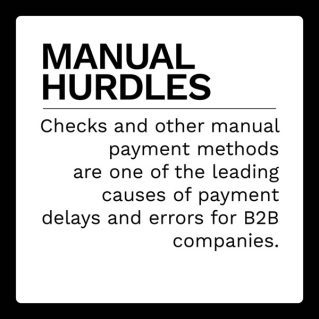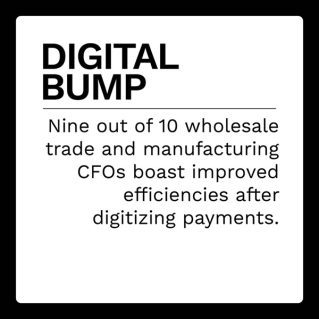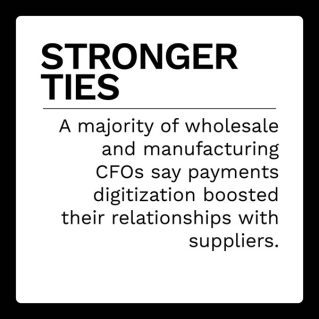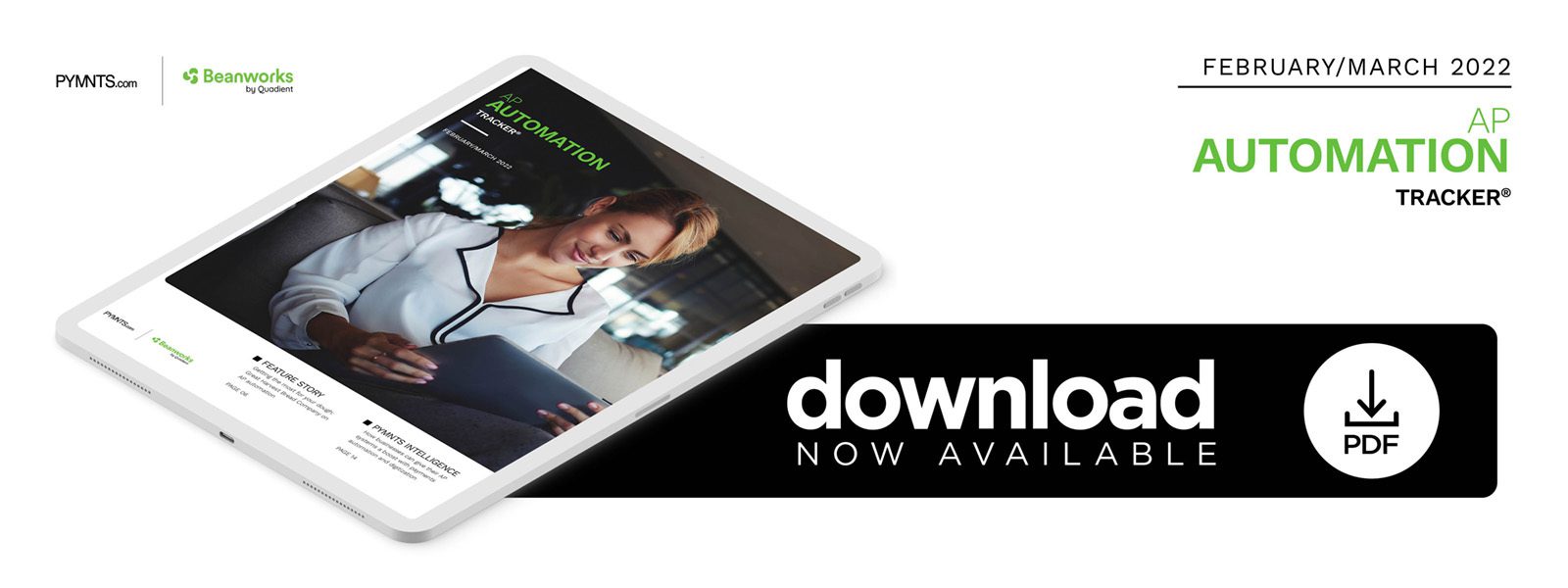AP Automation Unlocks Smoother Payments, Stronger Businesses Ties as Workers Stay Remote

Worldwide, business-to-business (B2B) payments volume clocks in at $120 trillion per year, but many organizations still primarily rely on manual processes to keep their accounts in order. One PYMNTS study found that 25% of B2B payments are made via paper check, with a significant number of issues stemming from these inefficient methods. As late and delayed payments add up, the typical company writes off 1.5% of its receivables as bad debt, resulting in large sums being lost each year to preventable issues.
Fixing these issues and helping payments and supplier relationships get back on track requires businesses to buy into digitization and automation. A recent PYMNTS survey of wholesale trade and manufacturing chief financial officers found that 91% of organizations reported improved efficiencies when digitizing payments, 84% reported improved working capital management and 62% reported cost reductions.
In the February/March 2022 “AP Automation Tracker®,” PYMNTS explores the latest in the world of accounts payable (AP), including the problems with paper-based B2B payments, how these issues affect supplier and customer relations and how automated payment systems can help businesses of all types reduce errors and delays.
Developments From Around the World of AP Automation
Businesses in the United Kingdom are grappling with cash flow issues resulting from inefficient AP. Approximately half of the value of all U.K. B2B sales were overdue in the past year, and 8% were written off as uncollectible. These cash flow problems are expected to worsen in the year ahead. Thirty-nine percent of U.K. businesses expect it to take longer to collect payments, and another 39% anticipate that the average days sales outstanding (DSO) will increase. Late and missed payments create problems down the line for other firms as well, with 26% of U.K. businesses saying they have delayed paying their own suppliers because their own invoices were not paid on time.
Swapping manual AP processes for digitized solutions can help businesses save time and money, and some solutions providers are rolling out free or reduced-cost services to help businesses get the ball rolling. AP automation solutions provider Beanworks by Quadient recently announced that it was offering a no-cost, back-end workflow solution designed to help businesses break free of their entrenched paper-based processes and unlock some of the efficiencies of digitization. The solution functions as an all-in-one AP offering and gives accounting teams remote access to overhaul and streamline their workflows.
For more on these and other AP automation news items, download this month’s Tracker.
How Great Harvest Bread Company Leverages AP Automation to Resolve Cash Flow Issues
As suppliers’ expectations for faster payments rise and further complicate remote workplace scenarios, companies face growing payment challenges. AP automation could be a key factor in reducing these payment challenges, especially as many offices show no signs of reopening soon.
In this month’s Feature Story, PYMNTS talked with Mike Ferretti, CEO of Great Harvest Bread Company, about how AP automation has streamlined accounting processes and made the work-from-home shift more bearable.
PYMNTS Intelligence: How Payments Automation Can Improve B2B Transactions
U.S. companies conduct more than $25 trillion in B2B payments annually, with this figure expected to increase in the coming years as the health crisis eventually abates and the world economy emerges from its pandemic-related downturn. In the meantime, however, CFOs face a world of issues, with 70% of CFOs saying that the pandemic delayed payments and 61% saying the health crisis increased DSO.
In this month’s PYMNTS Intelligence, PYMNTS explores how AP automation can drive faster and more accurate B2B payments experiences.
About the Tracker
The “AP Automation Tracker®,” done in collaboration with Beanworks, examines the latest developments in accounts payable automation around the globe.
